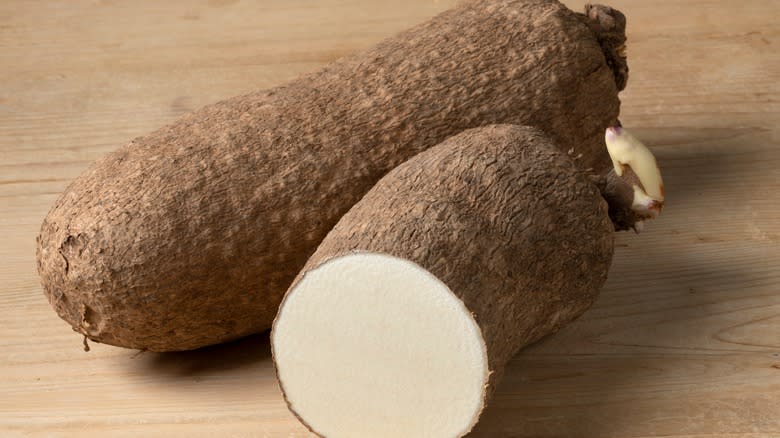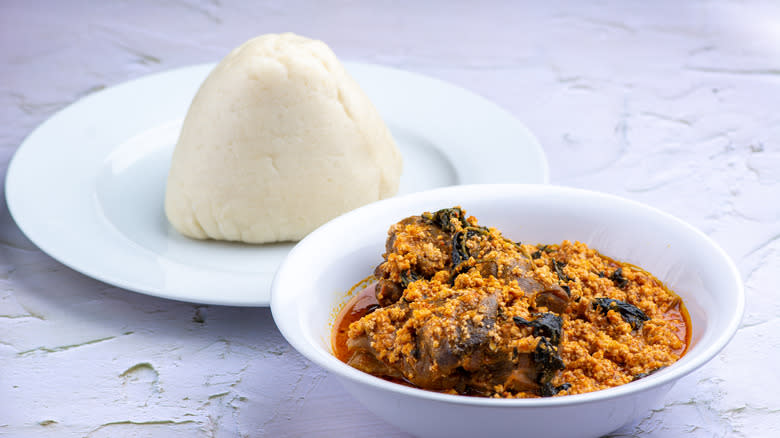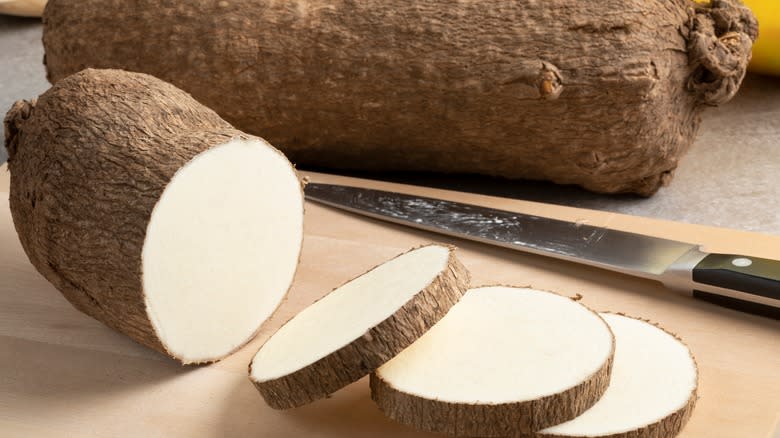Most Of The World's Yams Come From This Country

We may receive a commission on purchases made from links.
Yams, often mistaken for sweet potatoes, are nutrition-rich tubers that have rough, dusty brown skins and starchy, pale-fleshed interiors. Yams have a neutral taste like potatoes or cassava, unlike sweet potatoes, which are sweet. Just as versatile as potatoes, yams are a primary component of the diets of those in Africa and the Caribbean. And as it turns out, Nigeria produces the most yams globally at a figure of nearly 69%, according to data from the Food and Agricultural Organization of the United Nations compiled by HelgiLibrary. But while the crop is abundant, there is interestingly little if any export.
Beyond being a source of nourishment, yams have significance in Nigerian culture, representing abundance, good fortune, and a bountiful gift from the gods as a result of the labor required to grow and harvest them. This gratitude is shown by the Igbo people through a celebration called the New Yam Festival, still celebrated today. An extremely revered crop in Nigeria, yams are beloved by men and women alike. The tubers were once used to determine whether a farmer was masculine enough based on his crop yield, and women believed yams to be the key to conceiving twins.
Read more: 12 Vegetables And Fruits That Used To Look Very Different
How Nigeria Uses Yams

Yams can be cooked using just about any method that works for potatoes. Amp up a classic mashed potato dish by replacing the spuds with yams. In fact, pounded yam, made by boiling and — you guessed it — pounding yams, is a classic side dish in Nigerian cuisine that is commonly eaten by hand and enjoyed with soups and stews. It's also common in Nigeria to thicken soups with pounded yam, which is a great option since the taste of yam is neutral and it'll add weight to your soup if you're trying to avoid common thickeners like cornstarch.
Other ways to enjoy yams include making fries out of them or thinly slicing them to bake as an alternative to potato chips. In Nigeria, a dish called yamarita fries calls for dredging sticks of the tuber in egg and flour seasoned with curry powder before dunking them in hot oil.
When eating fried or baked yam, you'll be reminded of cassava or yuca fries as the tastes are quite similar. In fact, the flavors are so similar that you can even turn yam into flour and add it to a gluten-free pie crust in place of cassava. When it comes to baking bread, however, a study published by the Cereal & Grains Association found that yam flour was more successful.
Yams Are Prized For Their Nutritional Qualities

Yams are made up of a starch that isn't digested by the body, which is actually a good thing because it helps keep sugar levels in the blood balanced, according to Healthline. These benefits are supported by the high fiber content in yams, which is also helpful for those who struggle with digestive issues such as IBS or constipation.
Yams are high in antioxidant vitamins like A and C, which are thought to help fight inflammation in the body and bolster the immune system, as noted by the University of Rochester Medical Center. Copper is found in yams; it's great for encouraging hemoglobin and collagen formation in the body, both of which are involved in essential functions such as regulating metabolism. Yams are also a good source of manganese, which aids the digestive system by helping to absorb nutrients and creating enzymes to digest food.
The nutritional profile of yams has long been valued by the "yam belt" that spans Nigeria, Guinea, and Cameroon. However, some researchers have recognized the value of yams and are working to breed both wild and domestic yams to make them resilient to climate change, ensuring food security for future generations.
Read the original article on Daily Meal.

